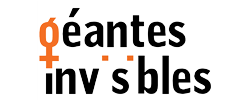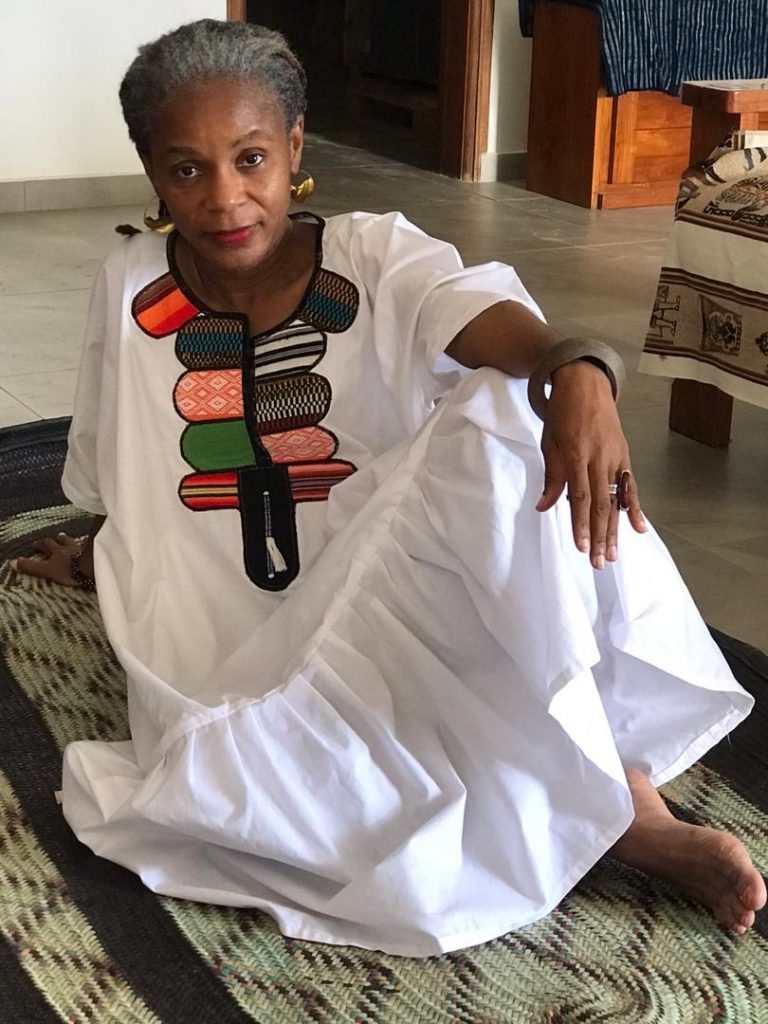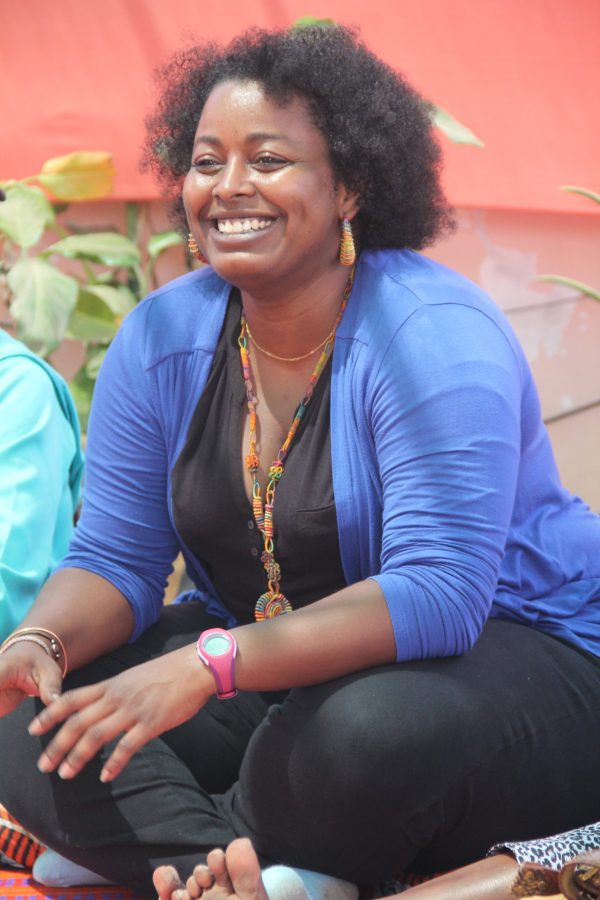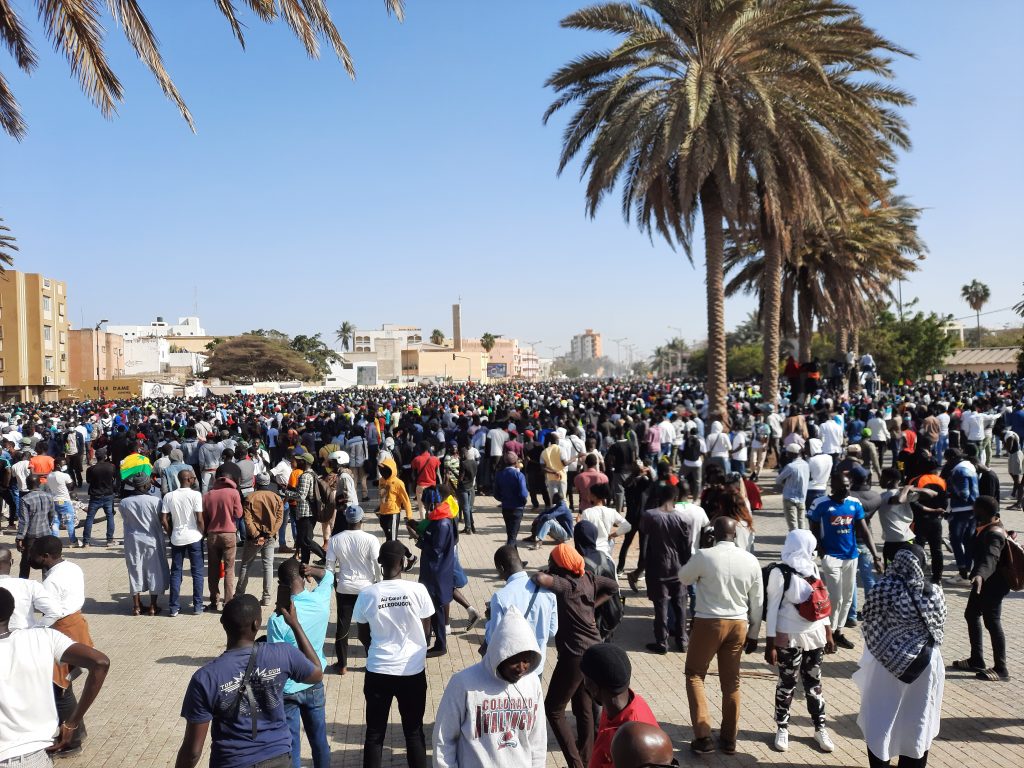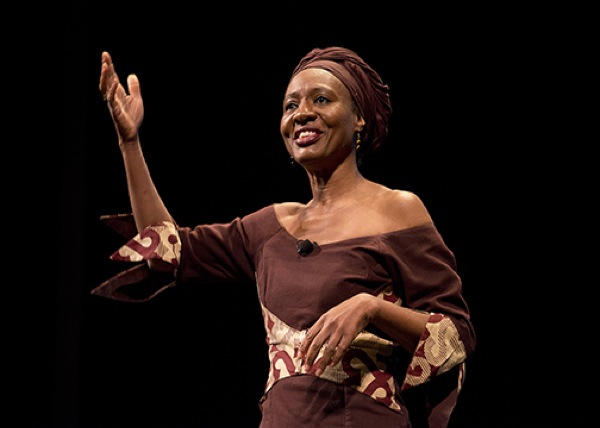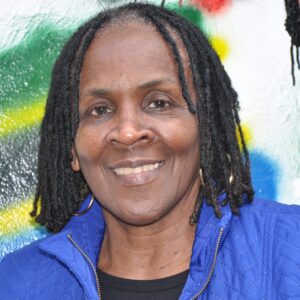Elle écrit et publie des livres pour enfants (voir Facebook « Les livres et contes de Coumba »).
Elle est une des coordonnatrices du mouvement panafricain Africans Rising, elle est la présidente du conseil d’administration de la fondation « Trust Africa » et du « Baobab Center ».
Les Géantes Invisibles
Quand on les cherche, on les trouve souvent… sous notre nez. On les voit sans faire attention à elles. Ndeye Seck, tambour major a joué le sabar à travers le monde, un métier dans lequel il y a peu de femmes. Mais elle est une, parmi d’autres géantes invisibles. Il y a tant de femmes comme elle qui ont dépassé les cadres culturels, religieux, économiques… qui avaient déjà décidé de la limite de leur destinée.
A chaque fois que je les rencontre et que je les reconnais, je me demande quelle force leur a permis d’échapper à la spirale enclenchée depuis leur naissance. Comment et où trouvent-elles la force et aussi la chance de survivre ?
Je leur pose d’abord la question : Qui es-tu ? Qui es-tu pour défier les normes établies ?
Cela fait plus de vingt ans que je collectionne des histoires de géantes invisibles, des histoires si vraies qui pourtant dépassent la fiction, des histoires de femmes qui nous soignent du désespoir et du cynisme.
Géantes Invisibles ? Je pense à celles qui comme Saly Wade utilisent l’alimentation pour soigner.
Elle m’a dit : « Je suis géographe, mais je suis entrée dans la nutrition par la porte de la maladie. J’avais besoin de soins moi-même, j’avais tout essayé et rien ne marchait. Petit à petit, j’ai cherché et trouvé mes propres solutions à travers l’alimentation.
J’ai utilisé les mêmes techniques et procédés de recherches que j’utilisais à l’université dans mon travail. Petit à petit, j’ai découvert des choses : il est possible d’utiliser certains aliments pour se soigner, il est possible de changer de rythme, il est possible qu’une fois la maladie installée, d’accompagner quand même les humains à retrouver leur joie de vivre… ».
J’adore Saly ! Ce qu’elle dit est sensé. Manger, nous avons besoin de le faire pour vivre. Mais on ne mange pas juste pour « manger », pour nourrir le corps comme si on avalait des comprimés. Manger va souvent avec un rituel. Il y a une partie psychologique, dit-elle, qui fait que lorsqu’on est malade, qu’on a des interdits alimentaires (sucre, sel…) et que dans notre propre maison on nous fait un plat séparé, si on avait l’habitude de manger ensemble, on perd le goût, on a plus envie ou alors on triche contre soi-même. On cherche souvent un goût particulier, alors manger un plat auquel on a soustrait un élément comme le sel, ça ne marche pas. Il nous faut autre chose pour ne pas s’attendre au même goût. Manger, c’est aussi se souvenir des gens avec qui on a mangé.
Parmi les migrants, les habitudes alimentaires sont les dernières choses à disparaître, sur des générations. On perd les langues avant de perdre les plats. La nostalgie de l’endroit d’où l’on vient est très souvent liée au goût des aliments qui nous manquent.
Manger, c’est se rappeler ce qu’on mangeait, qu’on était à côté de sa mère, sa grand-mère, son père, ses frères, ses sœurs et ses ami(e)s.
Lorsque les aliments sont rattachés à un bon souvenir ou des relations, il est difficile de se détacher de ces aliments.
Géantes Invisibles. Il y a celles qui sont professionnelles des soins, de la psychothérapie comme Khaira Thiam, celles qui ont appris à travailler avec l’esprit, à recadrer, à poser des questions, à faire faire des exercices pour faire revenir celles qui sont parties loin d’elles-mêmes. Celles qui portent et gardent les secrets les plus lourds du viol, de l’inceste, de la pédophile et de la violence conjugale. Celles qui amènent petit à petit celles qui ont eu des chocs, des accidents, des violences sur leurs esprits. Très souvent, elles ramassent à la petite cuillère des femmes, des filles victimes de violences de la part de gens proches ; quelquefois trop proches pour parler, trop proches pour les défier.
Et voilà que quelqu’un doit aider à recoudre les fragments, à ramener un semblant d’équilibre. Bien sûr, les cicatrices restent, on n’est jamais comme avant, mais au moins on peut fonctionner. Quelque part c’est comme une amputation. La seule chose qui reste à faire est de marcher, avec des béquilles ou pas.
Géantes Invisibles comme Adji Fatou et ces femmes qui soignent aussi autrement, qui alignent les rythmes. Ne me demandez pas comment, puisque je ne le sais pas. Les ndeupkat ont la croyance que les êtres humains ont un rythme… Qu’il est des fois, où la maladie psychiatrique vient du dérèglement du rythme et appelle à un réalignement. Les femmes sont prêtresses et les hommes qui y officient sont habillés comme des femmes et dansent comme des femmes. Les soins sont souvent communautaires, je vois que beaucoup de membres de la famille doivent y participer pour que cela marche. Dans la thérapie, on joue de la musique : le sabar, les chants ; on danse, et on tourne… Tant de sons joués, jusqu’à trouver le rythme qui met en transe la personne malade. Et dans la transe quelque part, mystérieusement le soin se passe. La personne dévoile ses “médicaments” et elle demande (peut-être pas elle, mais en tout cas ses accompagnants spirituels, par sa voix), des choses.
Quelques fois c’est du sang et il faut sacrifier un animal et quelque fois c’est du lait. D’autres fois, c’est de l’alcool et que sais-je encore. En tout cas, des besoins sont exprimés qui n’auraient jamais pu l’être dans une conversation normale.
Si la guérison est une possibilité, des hommes et des femmes reviennent à eux, rassemblent leurs parties, se rappellent de qui ils/elles sont, de qui ils/elles étaient avant leur fragmentation.
Et aussi il y a celles qui soignent par le toucher, celles qui font des massages, des soins énergétiques ; celles qui soignent par l’art comme Felicité Codjo ou par le théâtre comme Nathalie Vairac… Bien entendu le formatage cartésien de mon cerveau résiste souvent, mais peu importe mes croyances tant que les patient(e)s se sentent mieux.
Il y a encore celles qui soignent par l’écoute et les questions. Les coachs comme Patricia Sennequier et Fatime Faye ou tout simplement des activistes défenseures des droits humains. Binta Sarr est partie, mais elle a laissé des oreilles attentives à la douleur des femmes à l’APROFES. Souvent, le premier soin c’est l’écoute, c’est quelqu’un qui reconnaît avec toi l’injustice de comment tu as été traité. Souvent, le premier soignant est une avocate, une gynécologue, une conseillère juridique ou tout simplement une sœur qui t’accompagne à la police, témoigne que tu n’es pas la fautive, mais bien la victime.
Géantes Invisibles, ces femmes que je conte, ces femmes dont je raconte les histoires ont dû se soigner elles-mêmes. Elles ont dû faire le chemin de leur propre cicatrisation, celui d’avoir appris quelques fois de manière informelle, puis de manière formelle à trouver une solution pour elles-mêmes, pour leurs familles ou pour leurs voisines.
Qui soigne celles qui soignent ? Qui prend soin des Géantes Invisibles et de celles qui donnent l’espoir. Il semble y avoir un grand manque. Souvent, je n’ai pas de réponses à mes questions. A la rencontre de Feminist Republiik au Kenya, organisée par le fond d’urgence pour les femmes, j’ai vu la possibilité de donner ce moment à ses soignantes. Même si nous n’avons pas les moyens de faire un tel niveau de rencontre, nous devons à petite échelle trouver le moyen d’offrir un répit à nos vaillantes combattantes.
La célébration des Géantes Invisibles est une tentative de reconnaissance et de soin pour celles qui donnent autant à tant de personnes dans nos communautés.
